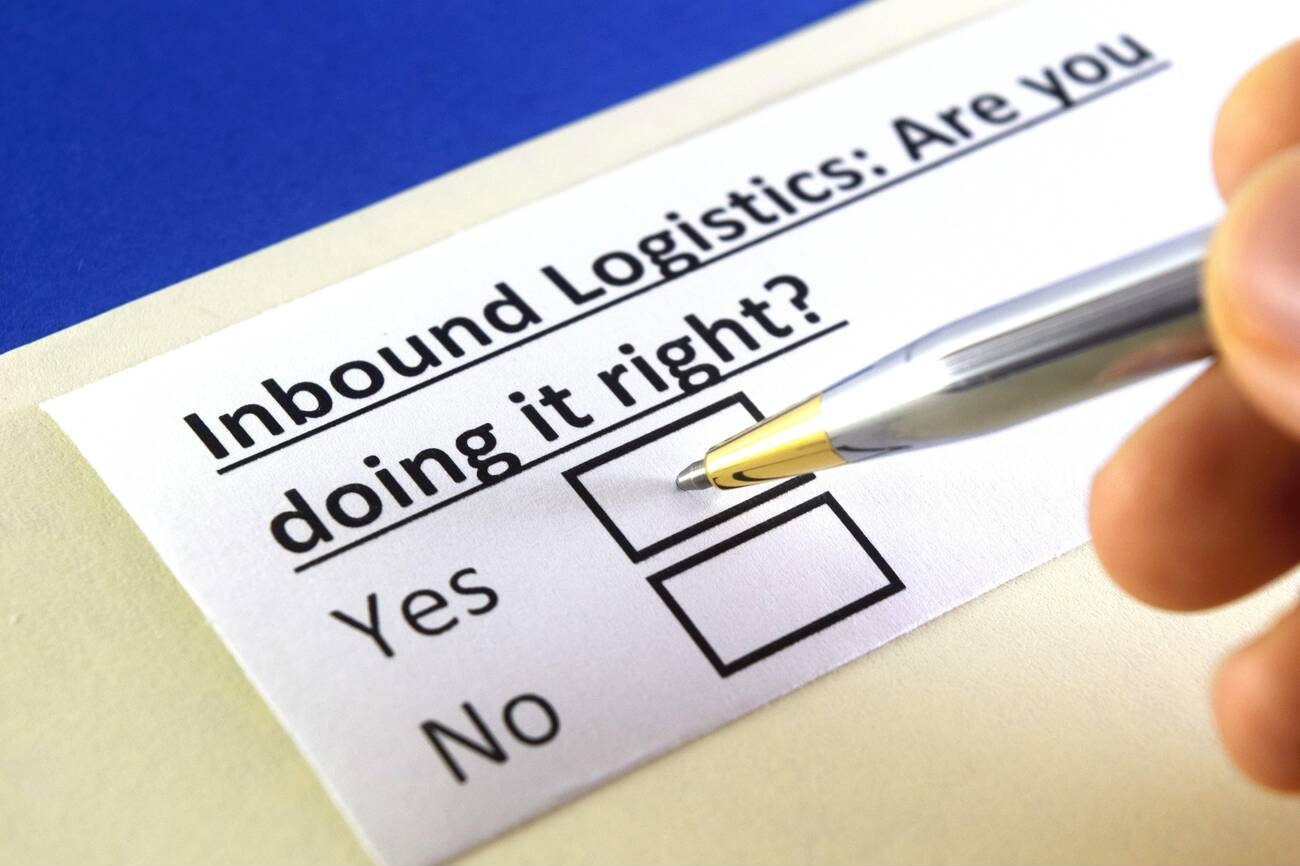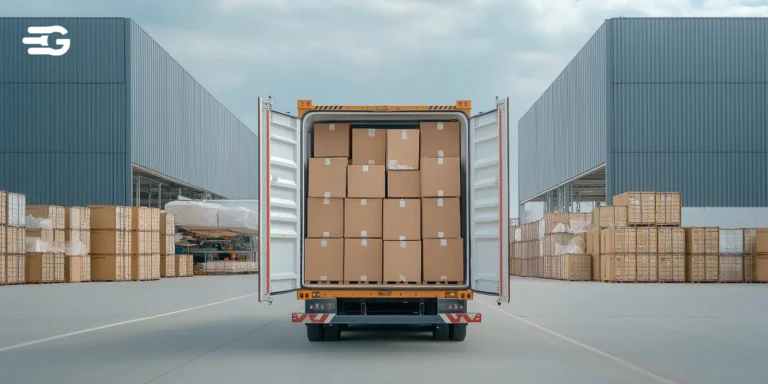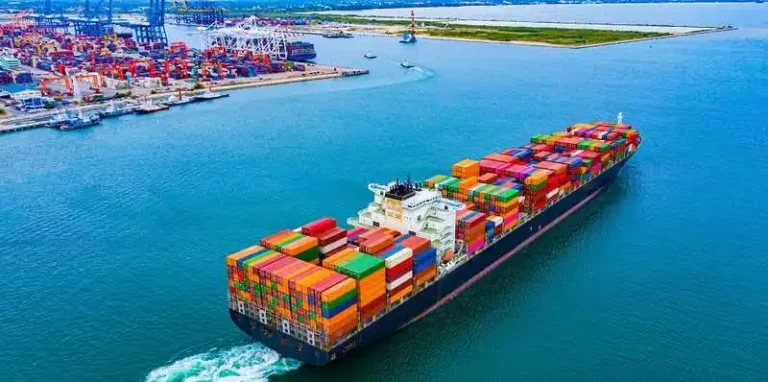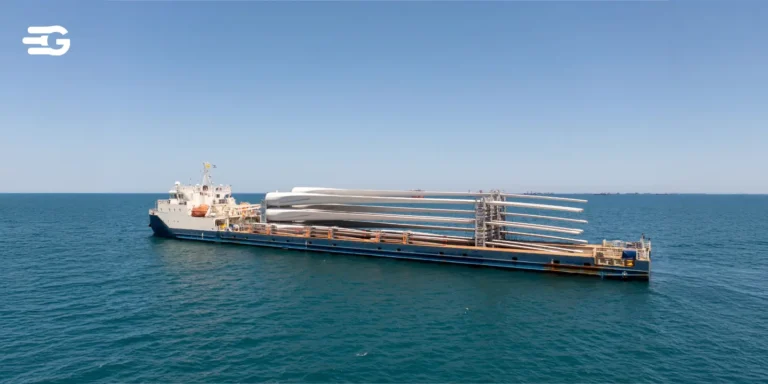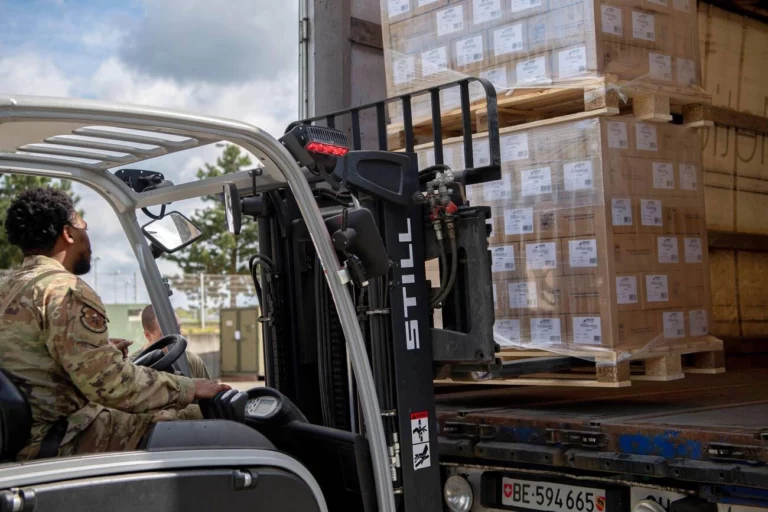Inbound Logistics: Definition, Benefits, and More
When businesses look to streamline their supply chains, inbound logistics plays a significant role. It’s the process that ensures raw materials and goods arrive at the right place and time to support smooth operations. But what exactly is inbound logistics? Why should companies care about it? Let’s explore how it shapes the supply chain, the benefits it offers, and how businesses can optimize it.
What is Inbound Logistics?
Inbound logistics refers to the movement, storage, and delivery of goods coming into a business. This includes managing the transportation of raw materials, components, and finished products from suppliers to warehouses or manufacturing facilities. Think of it as the front end of the supply chain, making sure everything needed for production arrives on time and in the right condition.
Inbound logistics is closely linked to the broader concept of logistics management, which is crucial to ensuring all goods and materials are tracked, stored, and delivered efficiently. If you’re interested in a deeper look into transport and logistics management, check out this blog on What is Transport and Logistics Management and Why is it Important?.
For large companies with complex supply chains, getting inbound logistics right is critical. Delays in receiving goods can halt production, while improper handling can lead to damage, increased costs, and missed deadlines.
Examples of Inbound Logistics
Inbound logistics covers several activities that businesses rely on daily. Here are some real-world examples:
- Raw Material Procurement: A manufacturing company depends on getting raw materials from suppliers. For instance, a car manufacturer needs steel, rubber, and plastic components from different suppliers to assemble a vehicle.
- Transportation of Goods: A distributor receives products from multiple manufacturers and ships them to various retail locations. This requires coordination with freight forwarders to ensure timely deliveries.
- Inventory Management: A retail chain manages large stocks of goods coming from suppliers. Effective inbound logistics ensures that these goods are properly stored and ready for sale when needed.
- Warehousing: A company receives large shipments of electronic components. These items must be stored in a warehouse, sorted, and made available for assembly.
Each of these examples shows how vital inbound logistics is to keep businesses running smoothly. Warehouse logistics plays a key role in ensuring goods are properly stored and managed before reaching the next stage in the supply chain. To learn more about optimizing warehouse operations, refer to Understanding and Optimizing Warehouse Logistics.
Benefits of Inbound Logistics
The role of inbound logistics is often underestimated. But, when done correctly, it delivers multiple advantages to businesses, especially those that rely on large-scale shipments.
Cost Savings: Efficient inbound logistics reduce transportation and warehousing costs. By optimizing routes and consolidating shipments, businesses can cut down on unnecessary expenses. For more insights on logistics cost reduction strategies, check out Strategies for Reducing Logistics Costs.
Faster Production: Timely delivery of materials ensures that production lines don’t stop. This leads to better use of resources and quicker turnaround times.
Improved Supplier Relationships: Businesses that manage inbound logistics well often have stronger relationships with suppliers. Clear communication and timely payments foster trust and reliability.
Higher Customer Satisfaction: When raw materials arrive on time, businesses can meet customer demands without delay. This directly impacts customer satisfaction and brand loyalty.
Better Inventory Management: Effective inbound logistics practices help businesses keep their inventory levels just right. Not too high, not too low. This reduces the risk of overstocking or stockouts.
These benefits can help drive profitability and operational efficiency for businesses that ship products in bulk or manage complex supply chains. To better understand how to optimize supply chain logistics, consider reading What is Optimizing Supply Chain Logistics?
Challenges in Inbound Logistics
Like any business process, inbound logistics isn’t without its challenges. Here are some common hurdles that companies face:
Supplier Delays: A delay at the supplier’s end can cause a ripple effect across the entire supply chain. Production may be held up, or the company may face stockouts that affect sales.
Transportation Issues: From traffic delays to unpredictable weather, transportation problems can disrupt the timely delivery of goods. Managing these risks requires foresight and proactive planning.
Inventory Management: Maintaining the right level of stock can be tricky. Overstocking leads to high storage costs, while understocking can cause delays in fulfilling orders.
Cost Control: Shipping costs can fluctuate due to fuel price changes, tariffs, or unexpected transportation fees. This adds complexity when managing logistics budgets.
Technology Integration: Businesses often struggle to integrate logistics software with other systems like inventory management, order processing, or warehouse management systems.
Recognizing these challenges early on and finding ways to mitigate them is essential for any business focused on optimizing its inbound logistics processes.
Difference Between Inbound and Outbound Logistics
Inbound logistics focuses on the flow of materials coming into a company, while outbound logistics deals with the movement of finished products from a business to its customers.
Here’s a breakdown of the differences:
| Aspect | Inbound Logistics | Outbound Logistics |
| Definition | Focuses on the movement and management of raw materials, components, and goods coming into the company. | Focuses on the process of fulfilling customer orders by delivering finished goods to the consumer or end user. |
| Main Objective | Ensure the timely and efficient receipt of materials needed for production or inventory. | Ensure that finished products are delivered to customers on time, meeting demand and quality expectations. |
| Key Activities | Sourcing, transportation, receiving, warehousing, and inventory management. | Order fulfillment, packaging, shipping, transportation, and managing returns. |
| Flow of Goods | Goods flow from suppliers to the business for production or stock. | Goods flow from the business to the customers or retailers. |
| Suppliers vs. Customers | Involves interaction with suppliers and manufacturers. | Involves interaction with customers, retailers, and distributors. |
| Impact on Production | Directly influences production timelines and inventory levels. Delays in inbound logistics can halt production. | Directly influences customer satisfaction. Delays in outbound logistics affect customer orders and may result in lost sales or damaged reputation. |
| Transportation Methods | Primarily involves bulk shipments, often through sea, rail, or truck, to transport raw materials or components. | Can involve smaller, more frequent shipments, usually by truck, air, or courier services, to deliver final products. |
| Inventory Management | Involves managing raw materials and components, ensuring they are available for production without overstocking. | Involves managing finished goods, ensuring inventory is available for customer orders without excess. |
| Warehouse Management | Goods are stored in warehouses or production facilities until needed for production. | Finished goods are stored in warehouses or distribution centers before shipment to customers. |
| Packaging | Minimal packaging required for raw materials or components. | Heavy emphasis on packaging for brand presentation, protection, and regulatory compliance when delivering finished products. |
| Technology | Utilizes systems like Warehouse Management Systems (WMS) and Transportation Management Systems (TMS) to track raw material supplies, orders, and deliveries. | Uses Order Management Systems (OMS), Customer Relationship Management (CRM), and TMS to manage customer orders, shipping, and returns. |
| Cost Implications | Costs include raw material procurement, transportation, warehousing, and inventory management. Efficient inbound logistics can help minimize storage costs. | Costs include transportation, packaging, warehousing, and delivery. Efficient outbound logistics helps reduce shipping costs and improves customer satisfaction. |
| Challenges | Delays in inbound logistics can result in production halts, stockouts, and supply chain disruptions. | Delays in outbound logistics can lead to poor customer experiences, returns, and lost sales opportunities. |
| Impact on Customer Experience | Indirect impact through ensuring product availability for manufacturing and stock. | Direct impact by ensuring on-time delivery and customer satisfaction. |
| Relationship Focus | Focuses on establishing strong relationships with suppliers, ensuring consistent supply. | Focuses on establishing strong relationships with customers, ensuring fast and accurate order fulfillment. |
Key Takeaways:
- Inbound logistics is essential for the operational foundation of a business, ensuring that production can happen smoothly by managing raw materials and inventory.
- Outbound logistics, on the other hand, is customer-centric, focusing on the timely and efficient delivery of finished products to customers.
For businesses, both types of logistics must work seamlessly together to create an efficient, well-functioning supply chain. To better understand how supply chain and logistics management work together, read Supply Chain vs Logistics Management.
Difference Between Inbound and Reverse Logistics
While inbound logistics deals with receiving goods from suppliers, reverse logistics is the process of handling returns, recycling, and waste disposal.
Here’s the key difference:
| Aspect | Inbound Logistics | Reverse Logistics |
| Definition | Inbound logistics focuses on the flow of goods coming into a business from suppliers or manufacturers. These goods typically include raw materials, components, or finished products that are needed for production or inventory. | Reverse logistics deals with the process of moving products back through the supply chain. This includes returns from customers, recycling, refurbishing, disposal, and handling warranty claims. |
| Primary Focus | Ensure timely and efficient receipt of materials or goods needed for production or inventory. | Handle the return of products, manage disposal or recycling, and process warranties or refurbishments. |
| Goods Flow | Goods flow from suppliers to businesses to support production or stock. | Goods flow from customers back to the company, or from a company to third-party recyclers or refurbishers. |
| Supply Chain Stage | Occurs at the start of the supply chain, ensuring the availability of materials for production. | Occurs at the end of the supply chain, handling post-consumer goods or products that are no longer needed or are defective. |
| Types of Goods | Raw materials, components, and finished goods required for production or inventory. | Returned products, defective items, packaging materials, or goods that need to be recycled or disposed of. |
| Key Activities | Sourcing, transportation, receiving, storage, inventory management, and quality control. | Processing returns, inspecting products, refurbishing, recycling, waste disposal, and reintroducing products into inventory if possible. |
| Impact on Production | Direct impact by ensuring that raw materials or components are available to meet production schedules. Delays in inbound logistics can halt production. | Indirect impact by managing the flow of returns, ensuring that defective products are addressed, and managing waste, which can affect operational efficiency and profitability. |
| Technology Used | Warehouse Management Systems (WMS) and Transportation Management Systems (TMS) for tracking incoming goods, managing inventory, and optimizing transportation. | Returns Management Software, Reverse Logistics Platforms, and Inventory Management Systems (IMS) to process returns, track product conditions, and manage waste. |
| Inventory Management | Managing raw materials and components to ensure that there’s enough supply for production without overstocking. | Involves managing returned goods, determining if they can be resold, recycled, or discarded, and tracking returned inventory levels. |
| Costs Involved | Costs are related to procurement, shipping, transportation, and warehousing of goods. Efficient inbound logistics can reduce storage costs and optimize supply chains. | Costs are typically related to processing returns, handling shipping, refurbishing products, recycling materials, or disposing of goods in an environmentally friendly way. |
| Customer Interaction | Indirect interaction with customers through ensuring products are available on time for production or sale. | Direct interaction with customers regarding returns, complaints, warranty claims, or product exchanges. Managing this efficiently is crucial to customer satisfaction. |
| Challenges | Delays in supplier deliveries, transportation disruptions, inventory shortages, and mismanagement of incoming shipments. | Handling large volumes of returns, ensuring that returned goods are properly processed or refurbished, managing disposal in compliance with environmental regulations, and reducing costs associated with returns management. |
| Regulatory Considerations | Focus on compliance with procurement regulations, transportation laws, and inventory standards. | Focus on environmental regulations related to recycling, disposal laws, and compliance with product warranty policies. |
| Impact on Customer Satisfaction | Indirect impact, as timely delivery of goods ensures products are available for customer demand and production needs. | Direct impact on customer satisfaction by efficiently managing returns, offering refunds or exchanges, and addressing defects or product issues. |
| Key Metrics | Lead time, on-time delivery, inventory accuracy, and cost per unit for raw materials or products. | Return rate, processing time for returns, cost of reverse logistics operations, and customer satisfaction with the returns process. |
| Example | A car manufacturer receiving components such as engines and tires from suppliers for assembly. | A retailer managing the return of defective electronics from customers and processing refunds or exchanges. |
Key Takeaways:
- Inbound logistics is all about moving raw materials or goods from suppliers to the company, ensuring that the production process can continue smoothly.
- Reverse logistics, on the other hand, is about managing the flow of goods in the opposite direction, handling returns, recycling, waste disposal, and product refurbishing.
Both are integral to the overall flow of goods, but reverse logistics typically involves more complex processes like handling customer returns and refurbishing goods. You can read more on how businesses manage returns and disposal in Reverse Logistics.
How to Optimize Inbound Logistics
Optimizing inbound logistics is crucial for businesses that want to reduce costs, improve efficiency, and stay competitive. Here are some practical tips to help you get started:
- Work Closely with Suppliers: Build strong relationships with your suppliers to ensure they understand your delivery timelines and expectations. Communication is key to avoiding delays and managing changes in demand.
- Invest in Technology: Use logistics management software to track shipments, manage inventory, and streamline warehouse operations. Real-time tracking and data analytics can help you make smarter decisions.
- Plan Transportation Efficiently: Optimize transportation routes with the best transportation management systems. These tools help reduce costs and delivery times by identifying the most efficient paths and streamlining logistics.
- Consolidate Shipments: Reduce costs by consolidating shipments from different suppliers. This helps save on transportation costs and reduces the number of deliveries needed.
- Maintain Inventory Control: Use software tools to monitor inventory levels in real-time. This will help prevent stockouts or overstocking and ensure your production lines run smoothly.
- Streamline Warehousing: Optimize warehouse operations by implementing efficient storage systems and improving order picking. This helps reduce delays in receiving goods and speeds up the production process.
By taking these steps, businesses can create a more streamlined, cost-effective inbound logistics operation that supports the larger goals of the organization.
For more ideas on streamlining logistics management, consider reading Important Tips for Effective Logistics Management.
Conclusion
Inbound logistics is more than just moving goods from point A to point B. It’s an essential part of the supply chain that affects everything from production efficiency to customer satisfaction. By optimizing inbound logistics, businesses can reduce costs, improve inventory management, and build stronger relationships with suppliers.
As the demand for faster production and on-time deliveries continues to grow, getting inbound logistics right becomes more critical than ever. From working with reliable suppliers to using cutting-edge technology, companies have many tools at their disposal to optimize this process.
If you’re ready to improve your inbound logistics, start by assessing your current systems, identifying bottlenecks, and making improvements where necessary. By staying proactive and continuously refining your approach, you’ll set your business up for long-term success in today’s fast-paced, competitive market.ble and productive future for the entire supply chain ecosystem, not just keep up with the times.
